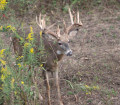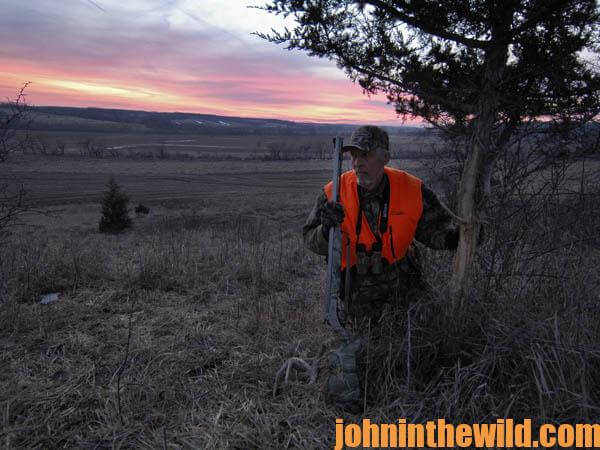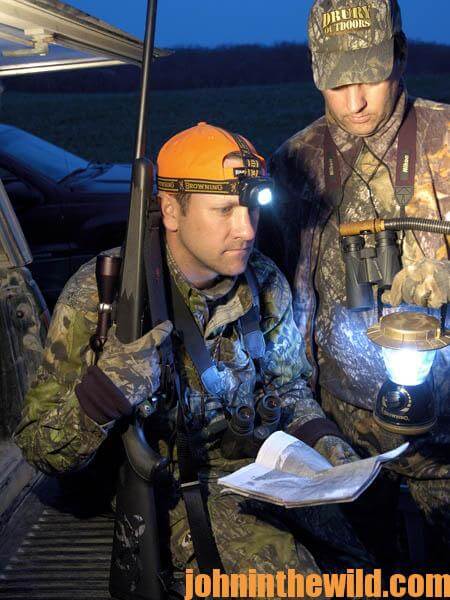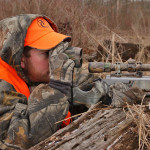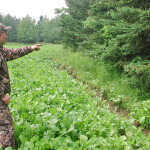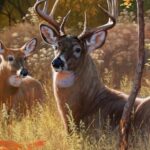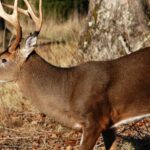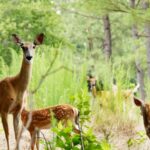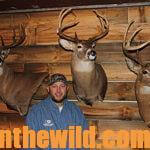John’s Note: Ronnie Groom of Panama City, Florida, has been one of the foremost deer hunters of our day for the past 30 years. Groom, a well-rounded deer hunter, participates in bowhunting, primitive weapon hunting and gun hunting. Groom was consulted for this article, because he hunts deer in several states – on public and private lands – where the hunting pressure is both heavy and light.
I like to try and take big deer in the mornings.
Generally these large bucks will be traveling from their feeding regions, going to some type of cover. I’ve discovered that most of the time early in the morning that the bucks will move into cover that may not be as thick as they will frequent later in the morning. The deer have learned that most sportsmen only will hunt until about 9:00 or 10:00 am. Then the hunters will give-up and head-back to their vehicles. They also realize that sportsmen don’t hunt in the middle of the day. So, these are the times that the big bucks will move the most to take advantage of the deer hunter’s predictable movement patterns. To hunt bucks when they are nocturnal, I come to my stand well before daylight and catch the deer traveling in this sparse cover before they move to deep cover. In high-pressure hunting areas, I’ve also learned to stay in my stand when other hunters aren’t hunting. Very-few sportsmen will go to their stands and be in them before daylight. Also few hunters will be in their stands between 11:00 am and 2:00 pm. So, these times are when I hunt bucks that have been branded as nocturnal.
How to Hunt the High Noon Bucks:
 Oftentimes deer that are moving in the middle of the day and don’t want to go into the thickets will feed along the edges of thickets. Many times there may be plenty of food just along the edge of thick cover. A big buck may travel along that edge and begin to feed in the middle of the day for two reasons. He knows that the food is there, and he wants to eat some lunch. Secondly, he realizes that if danger does approach – he’s within two steps of cover. He also knows that during the middle of the day the hunters are not moving. Therefore the likelihood of a hunter encounter is extremely slim.
Oftentimes deer that are moving in the middle of the day and don’t want to go into the thickets will feed along the edges of thickets. Many times there may be plenty of food just along the edge of thick cover. A big buck may travel along that edge and begin to feed in the middle of the day for two reasons. He knows that the food is there, and he wants to eat some lunch. Secondly, he realizes that if danger does approach – he’s within two steps of cover. He also knows that during the middle of the day the hunters are not moving. Therefore the likelihood of a hunter encounter is extremely slim.
To get “How to Hunt Deer Up Close: With Bows, Rifles, Muzzleloaders and Crossbows” and “Deer and Fixings” by John E. Phillips click here
About the Author
John Phillips, winner of the 2012 Homer Circle Fishing Award for outstanding fishing writer by the American Sportfishing Association (AMA) and the Professional Outdoor Media Association (POMA), the 2008 Crossbow Communicator of the year and the 2007 Legendary Communicator chosen for induction into the National Fresh Water Hall of Fame, is a freelance writer (over 6,000 magazine articles for about 100 magazines and several thousand newspaper columns published), magazine editor, photographer for print media as well as industry catalogues (over 25,000 photos published), lecturer, outdoor consultant, marketing consultant, book author and daily internet content provider with an overview of the outdoors. Click here for more information and a list of all the books available from John E. Phillips.

